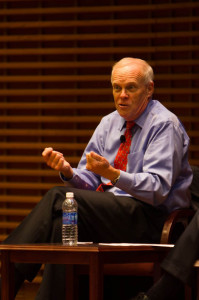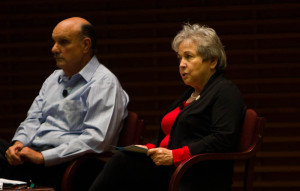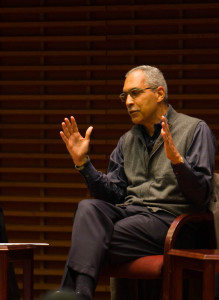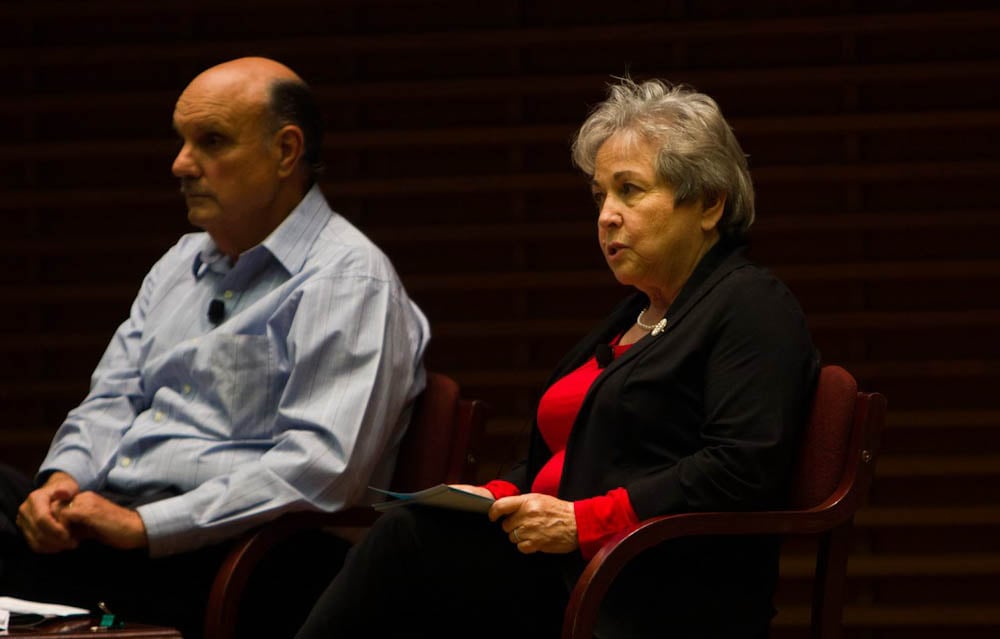
On Tuesday evening, the Stanford Pre-Education Society (SPREES) held its debut event, a panel discussion featuring President John Hennessy and prominent education experts. They focused on available careers in education and attracting Stanford students toward a career in education.
The event was co-sponsored by The Graduate School of Education (GSE) and the Education and Society Theme (EAST) House.
SPREES founder and president Julia Quintero ’15 anticipated the event would generate a new discussion surrounding education reform.
“I want this event to create [a] really important conversation that is not being had about education reform,” Quintero said.
On the topic of reform, Hennessy spoke about the politics surrounding education in the U.S. and the need to better fund schools.
“We’ve got to spend more money on young people in this country and move from spending disproportionate amounts of money on people over 65 to those under 15,” he said.
In addition to President Hennessy, Claude Steele, dean of the Graduate School of Education (GSE), Michael Kirst, president of the California State Board of Education and Rachel Lotan M.A ’81 M.A. ’83 Ph.D. ’85, director of the Stanford Teacher Education Program, spoke at the event. Quintero said the selection of speakers was important for facilitating a serious conversation.

“I also wanted to invite speakers who have the gravitas to grant legitimacy to the idea that Stanford students can and should become teachers or go into education in general,” Quintero said.
During the event, the four panelists addressed the question of career pathways for education as a field. Steele said that like other professions, education should be rooted in research.
Kirst emphasized that a career in education qualifies students for professions that go beyond teaching. Last year, he said, GSE graduates went on to work for companies that included Apple, UNESCO and the New York City Department of Education.
Lotan shared similar ideas.
“Teaching is the profession that makes all professions possible,” she said.
She also added that teaching as a career deserves more status and monetary compensation than it currently does in American society.
“Teaching is a political and a moral act,” Lotan said. “When we decide why we teach, we are making a political decision. We are expressing our vision and our goal for the future of society.”
Although the conversation focused on attracting students to careers in education, some students are already passionate about a future in teaching.

Nicole Kofman ’15, who attended the event, said she has wanted to be a teacher since the fourth grade, and although she does not plan on entering the field immediately after graduation, she would like to be a K-12 teacher at some point in her life.
Kofman said her favorite elementary and high school teachers inspired her, and she wishes more people would have respect for the teaching profession.
” One thing in particular that struck me was hearing Lotan talk about the passion that guides some into teaching,”Kofman said. “A lot of these people are the ones who end up being the best teachers.”
Although not personally interested in pursuing a career in education, senior Aaron Nagao B.S. ’14 M.S. ’15 said he valued the panel discussion and supports the expansion of programs like the Stanford Teacher Education Program, which allows graduate education students who are interested in teaching to gain both academic and practical experience in a classroom setting.
“I’m glad the panel was able to cover a variety of topics, especially the politics aspect of education in California and the current news from the State Board,” Nagao said. “For an undergraduate group to put [the event] on, it was impressive.”
According to Quintero, SPREES is currently planning a number of other events and programs for undergraduates interested in a career in education, including an internship program for shadowing teachers in the area, mentorship programing between undergraduates and graduate students in education and weekly lunches for discussion on issues in education.
Contact Sarah Moore at smoore6 ‘at’ stanford.edu.
